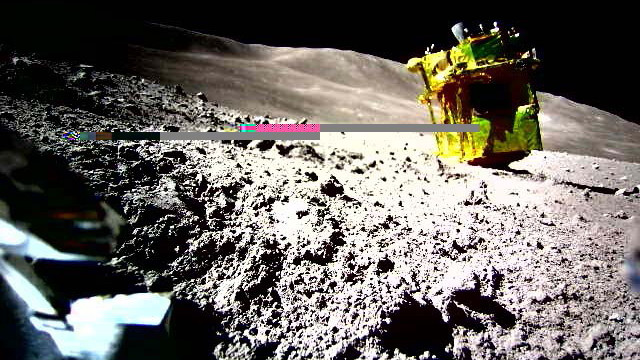The journey of the Lunar Sniper, the robotic explorer that made Japan only the fifth country to send a spacecraft safely to the lunar surface, is not going as expected.
Although the mission - officially known as the Smart Lander for the Exploration of the Moon, or SLIM - reached its destination last week, an "anomaly" experienced during descent caused the rover to land with its solar panels facing the wrong direction, forcing to operate on limited battery power, according to the Japan Aerospace Exploration Agency (JAXA).
Now that the Lunar Sniper's battery has been shut down to keep the spacecraft functional, JAXA officials are on standby, hoping the changing angle of the sun will restore power and allow the mission to resume. If the lander powers up again, it can fulfill its goals of gathering unprecedented information about a region called the "Sea of Nectar."
The spacecraft landed near a crater called Shioli, a Japanese female name, located about 200 miles (322 kilometers) south of the Sea of Tranquility, the region near the lunar equator where Apollo 11 first landed humans on the moon.
At about 268 meters in diameter, it is a small crater, but it is close to a much larger one called Theophilus, which is more than 97 kilometers in diameter. This detail makes it particularly interesting to study.
"When I read about it about a month ago, I was extremely excited to see that they chose this location," said Dr. Gordon Osinski, a professor of planetary geology at the University of Western Ontario who is also part of the upcoming lunar mission's Geology Team Artemis III.
"One of the great things about craters is that they dig up rocks from deep and essentially give us a window into what's below the surface of a planetary body," Osinski added. He noted that Shioli is standing on the ground, ejected from the larger crater nearby, which probably came from a depth of more than 1.6 kilometers, allowing researchers to study the moon rock without any drilling.
"I think they chose this particular crater because the mineral olivine was found - and every time you mention olivine, people's eyes light up because we think it probably came from the mantle of the moon, which we've never sampled before place," Osinski also said.
Space weathering
In November, NASA released photos of Shioli taken by the Lunar Reconnaissance Orbiter, a spacecraft currently orbiting the moon and mapping it to help future missions. In the black-and-white photo, the crater appears as a spot of light, CNN reported.
"The Moon doesn't have an atmosphere like Earth, so it's not protected and is constantly bombarded with micrometeorites and radiation that damage the surface layers," said Sarah Russell, professor of planetary sciences and senior researcher at the Natural History Museum in London.
The crater is lighter in color because radiation and micrometeorites have not yet had enough time to darken it: "When a crater forms, it ejects material that has been buried and that may be more pristine because it has not undergone this damage we call space weathering. So we get a new rock to look at and potentially learn more about the Moon," she pointed out.
"The opportunities to study these rare rock samples make the Moon a brilliant geological laboratory," Russell added.
"What the Moon has experienced, the Earth has also experienced. Observing craters can tell us something about our own history on Earth, because rocks form there without any of the complicating factors we have on Earth, such as water, life, and wind. It's a beautiful experiment in the sky,” she said.
After landing in the crater, the spacecraft took 257 low-resolution images of its surroundings, and the mission team later gave nicknames to some of the rocks in the photos. More pictures will be taken if the lander manages to regain power.
Precise accuracy
Another reason why the vicinity of Shioli was chosen as the landing site for Japan's SLIM mission is that its small size was an ideal training ground for the precise accuracy of the lander. Living up to its nickname, the "Lunar Sniper" actually landed just 55 meters from its target, which JAXA described as a "significant achievement."
"They're really using the technology to show that they can land in very small circles, which would be a pretty big step forward for interplanetary landing capabilities," explained Dr. John Pernet-Fisher, a research associate in geochemistry and cosmochemistry. at the University of Manchester in the United Kingdom.
Traditionally, lunar missions have targeted landing zones a few kilometers wide: "This condition really limits the places where you can land because you have to make sure that every point in the entire zone is safe," he stressed. "Things are much more difficult if you want to land in more challenging or rugged terrain, so this can really open the door to being able to land in areas that are topographically a bit more diverse and therefore can tell us something different about the moon and its formation," the expert concluded. /BGNES







